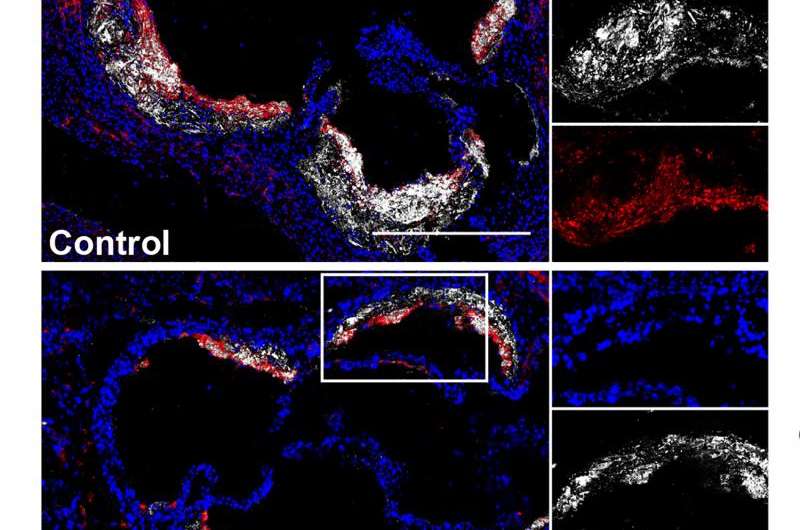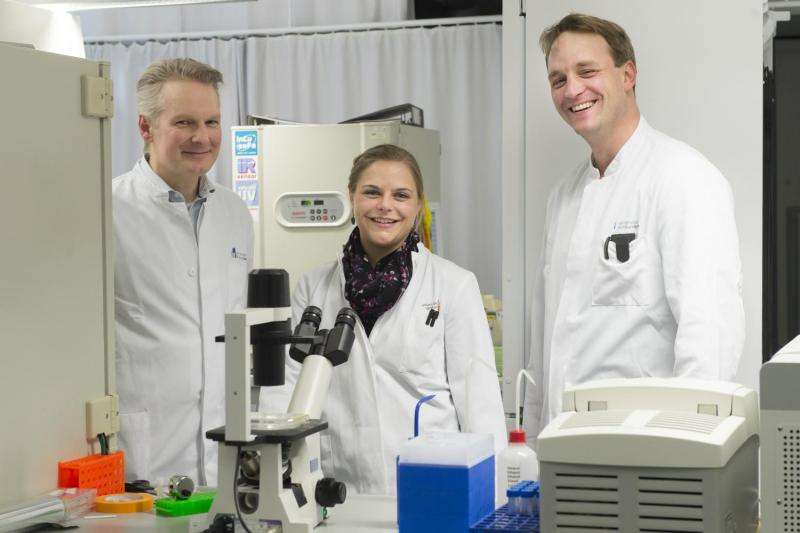Ring-shaped sugar helps in cases of atherosclerosis

Hardened and inflamed arteries, atherosclerosis, can be very dangerous. The consequences of atherosclerosis are among the most common causes of death in industrialized nations; in particular heart attacks and strokes. Crystalline cholesterol can contribute to this life-threatening inflammation in the arteries. An international research team of immunologists and cardiologists from the University of Bonn has now discovered that the ring-shaped sugar known as "cyclodextrin" can prevent and even reduce these dangerous cholesterol deposits. The results are now being published in the journal Science Translational Medicine.
It is always a challenge for researchers to find the right approach for tackling a scientific issue. Yet sometimes people without any particular medical expertise also provide important clues which then lead to real breakthroughs. This was the case with Chris Hempel from the USA whose twin daughters suffer from the rare "Niemann-Pick type C" disease. In this disease, gene mutations cause the dysfunction of cholesterol transport in the cells. Those affected initially develop normally, but then in childhood there is a rapid worsening of neurological function, with cognitive and motor impairment. Until Chris Hempel became active, there was no treatment for Niemann-Pick C. With the aid of scientists, the mother developed a novel therapy with the ring-shaped sugar "cyclodextrin" which leads to better elimination of excess cholesterol from brain cells. Clinical studies on this are currently being conducted in the USA.
Prof. Dr. Eicke Latz from the Institute of Innate Immunity at the University of Bonn is studying how crystalline cholesterol causes massive immune responses and leads to life-threatening inflammation in arterial walls. In 2010, he published a study in the renowned journal "Nature" on the connection between atherosclerosis and the immune system. In this study, the team of researchers working with Prof. Latz demonstrated that cholesterol crystals can activate an important receptor complex of the innate immune system and thus increase the inflammatory response in artherosclerosis. This caught Chris Hempel's attention and she reported her experiences with cyclodextrin to the immunologist.
High-cholesterol diet for mice
With an international team of researchers from Germany, the USA, Norway, Australia and Sweden, the scientists from a variety of fields from the University Hospital Bonn, under the direction of Prof. Latz, investigated whether cyclodextrin also has an effect on atherosclerosis. The researchers fed a particularly cholesterol-rich diet to mice for eight weeks and subcutaneously injected the animals with cyclodextrin. "They were far less affected by plaques in their blood vessels than a control group who did not receive any cyclodextrin," says Dr. Sebastian Zimmer from the Department of Medicine II of the University Hospital Bonn. The ring-shaped sugars apparently program the cells in a way that leads to better elimination of excess crystalline cholesterol and also to a reduction in the inflammation in blood vessels at the same time.

Cyclodextrin increases the natural breakdown of cholesterol in the cells
The transcription factor "liver-X-receptor" (LXR) is a key regulator of cholesterol metabolism and thus plays an important role in connection atherosclerosis. "If too much cholesterol is present, LXR gives a signal. As a result, genes responsible for the efflux from the cell are activated," reports Alena Grebe, doctoral student in Prof. Latz's team. "In addition, this factor downregulates inflammation." If the gene for LXR was muted absent in mice, this signal cascade did not function and cyclodextrin did not show any effect. The ring-shaped sugar evidently fulfills the function of an intermediary which increases the natural mechanisms of cholesterol breakdown in the cells and additionally reduces the inflammatory response.
Using human atherosclerotic vessels, the team also investigated whether cyclodextrin has the same effect in humans as in mice. The researchers cultivated plaques which had been surgically removed from the carotid arteries of atherosclerosis patients in order to improve their blood flow. If cyclodextrin was mixed into the nutrient solution, the cells showed the same reprogramming as those of the rodents: the mechanisms for plaque reduction started up and the inflammatory response subsided.
The active substance is already on the market
Prof. Latz hopes that cyclodextrin can be further developed as a drug for the treatment of atherosclerosis. "It is already on the market as a pharmaceutical solubilizing agent. However, costly clinical studies are needed for the new application," says the immunologist from the University of Bonn. Chris Hempel who pointed out the active substance cyclodextrin is incidentally listed as a co-author in the journal publication.
More information: "Cyclodextrin promotes atherosclerosis regression via macrophage reprogramming," Science Translational Medicine, stm.sciencemag.org/lookup/doi/ … scitranslmed.aad6100


















